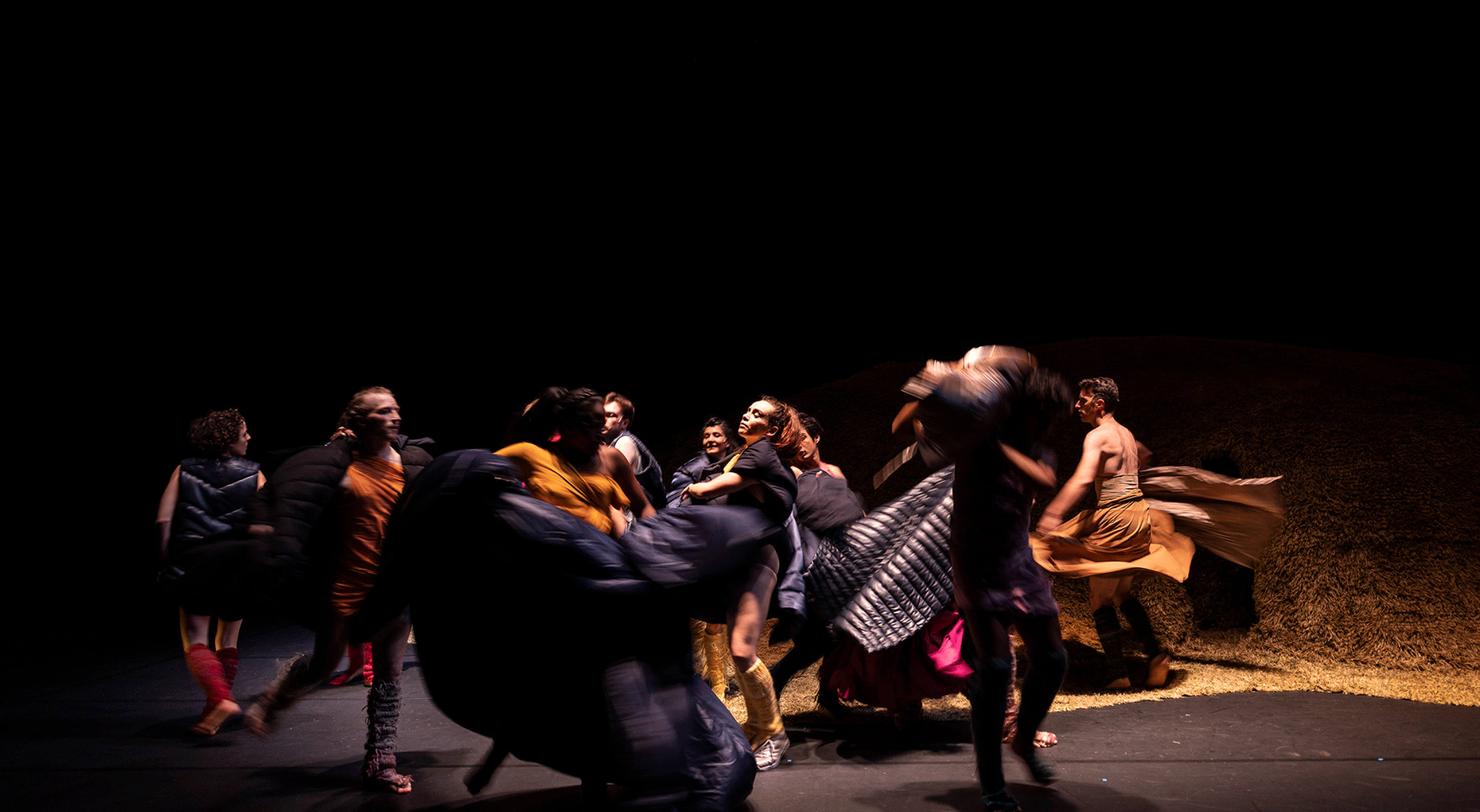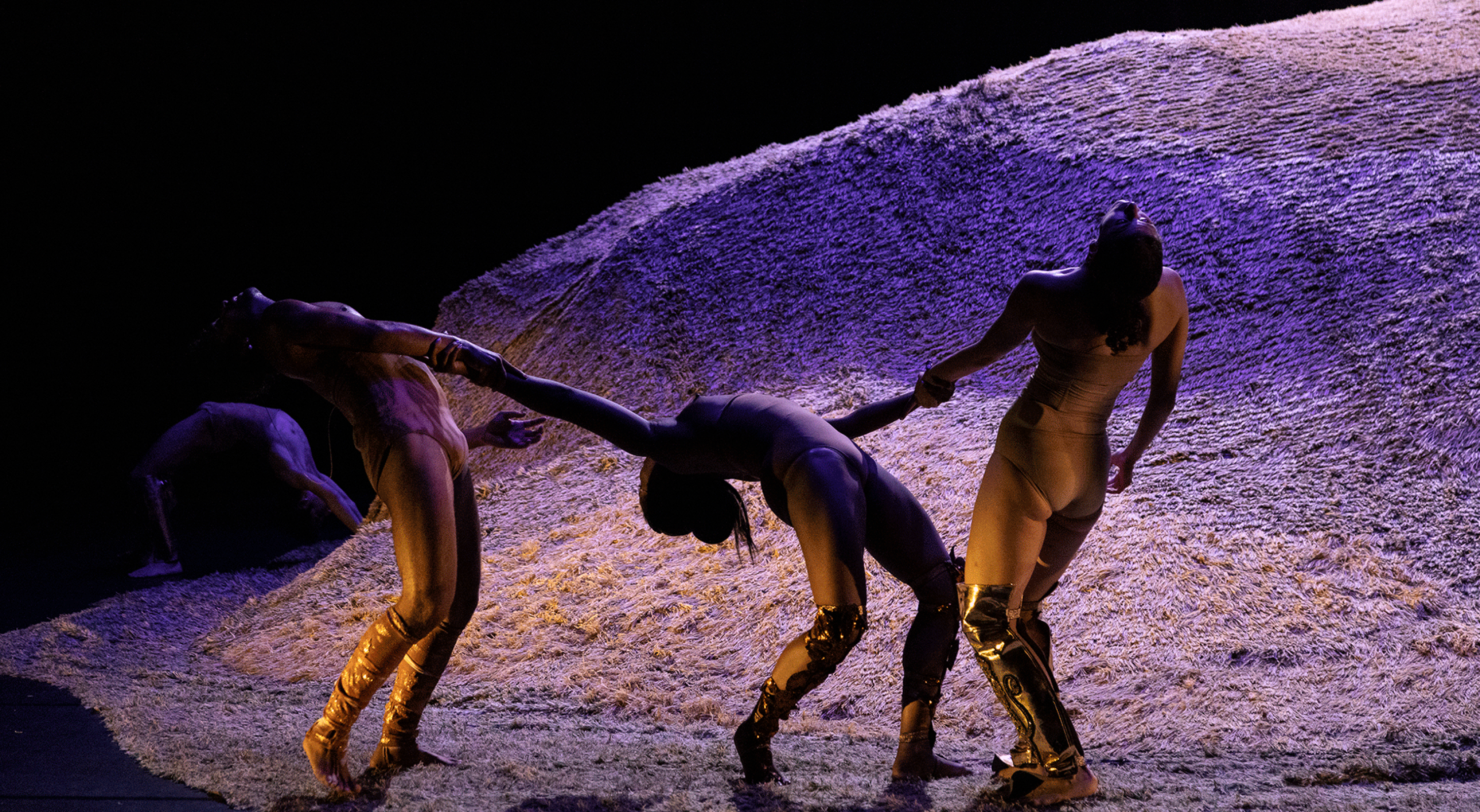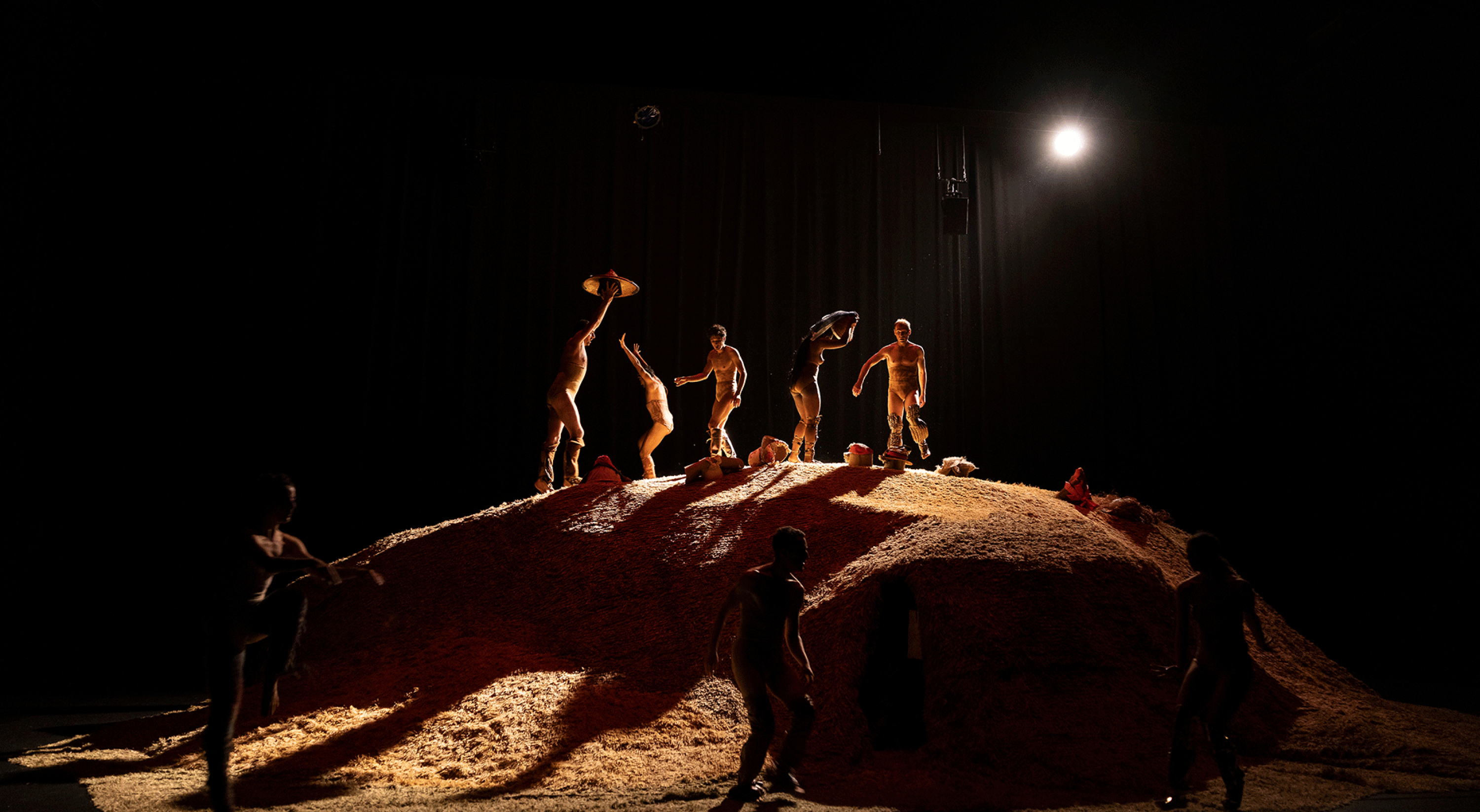François Chaignaud Geoffroy Jourdain
t u m u l u s
novembernov 16
novembernov 24 – 27
Design, François Chaignaud, Geoffroy Jourdain
Choreography, François Chaignaud
Musical director, Geoffroy Jourdain
Featuring Simon Bailly, Mario Barrantes-Espinoza, Florence Gengoul, Myriam Jarmache, Evann Loget-Raymond, Marie Picaut, Alan Picol, Antoine Roux-Briffaud, Vivien Simon, Maryfé Singy, Ryan Veillet, Aure Wachter, Daniel Wendler
Assistant, Anna Chirescu
Assistant musical director, Louis Gal
Stage work, Baudouin Woehl
Staging, Mathieu Lorry-Dupuy
Lights, Philippe Gladieux, Anthony Merlaud
Costumes, Romain Brau
General and light manager, Anthony Merlaud, Marinette Buchy
Sound manager, Aude Besnard, Camille Frachet, Alban Moraud, Jean-Louis Waflart
Stage manager, Laure Montagné ou François Boulet
Costumes manager, Alejandra Garcia ou Cara Ben Assayag
Administration, production, Mandorle productions (Garance Roggero, Jeanne Lefèvre, Léa Le Pichon) et Les Cris de Paris (Antoine Boucon, Diane Geoffroy, Aurore Lamotte)
International broadcasting, APROPIC–Line Rousseau–Marion Gauvent
Set design, Ateliers de la maison de la culture Bourges/Scène nationale
Production delegated to Mandorle productions in cooperation with Les Cris de Paris
Co-production and support from Bonlieu Scène nationale (Annecy); La Villette (Paris); Wiener Festwochen; Kunstenfestivaldesarts (Brussels); Théâtre Vidy-Lausanne; Points communs, Nouvelle scène nationale de Cergy-Pontoise et du Val d’Oise; Théâtre de Saint-Quentin-en-Yvelines, Scène nationale; TANDEM Scène nationale (Douai-Arras); Berliner Festspiele; TAP – Théâtre Auditorium de Poitiers; Malraux, scène nationale Chambéry Savoie; Opéra de Dijon; Maison de la Danse; Scène Nationale d’Orléans; Maison de la Culture de Bourges – Scène Nationale; Le Manège, scène nationale – Reims; Cité musicale-Metz; Ménagerie de verre (Paris); Théâtre Molière – Sète, scène nationale archipel de Thau; Théâtre de Cornouaille; Ballet National de Marseille – Centre Chorégraphique National; Scène nationale du Sud-Aquitain; Festival d’Avignon; Festival d’Automne à Paris
Residency hosted by Points communs, Nouvelle scène nationale de Cergy-Pontoise et du Val d’Oise (Paris)
With production support from DGCA
With support from PEPS – Interreg France-Suisse; Jeune Théâtre National (Paris); MC93 – maison de la culture de Seine-Saint-Denis (Bobigny); L’échangeur – CDCN – Hauts-de-France (Château-Thierry); la Fondation Royaumont; CND Centre national de la danse (Pantin); Le Regard du Cygne (Paris); Conservatoire national supérieur de musique et de danse de Paris; la vie brève – Théâtre de l’Aquarium
Fusalp provided support for costumes
Co-directed by La Villette (Paris); Festival d’Automne à Paris
With support from Dance Reflections by Van Cleef & Arpels
In partnership with France Culture
The choreographer François Chaignaud and the director of Cris de Paris, Geoffroy Jourdain, bring us this piece for thirteen performers - thirteen singing and dancing bodies. t u m u l u s is a never-ending procession blended with the power of polyphonic singing. It is always in a state of perpetual movement, like the act of breathing itself, and is a true celebration of the absent.
In the middle of the stage, the floor rises up into a grassy hump. It is a mausoleum, a tumulus, an ancient tomb covered over with a hill. It constitutes a lansdscape which turns the place of death and the dead into that of life and the living. A place where the onstage bodies appear and disappear, this space becomes a theatrical mechanism, a playground for visual and choreographic experimentation. In their piece t u m u l u s, François Chaignaud and Geoffroy Jourdain blend their respective artistic practices into a single movement: a procession in which the singing and dancing make visible the invisible and reveal the experience of a perpetual movement. Polyphonic singing, ranging from the Renaissance up to the 1970’s, resonates in the moving, pulsating bodies. In these musical works, spiritual inspiration, linked to grieving and consolation, composes a celebration to bodies which have since departed. On the stage, t u m u l u sconjures up an image of a community of the living, sharing, from the place of death itself, the immense joy of the fragility and non-permanence our very selves.
See also
In the same place



